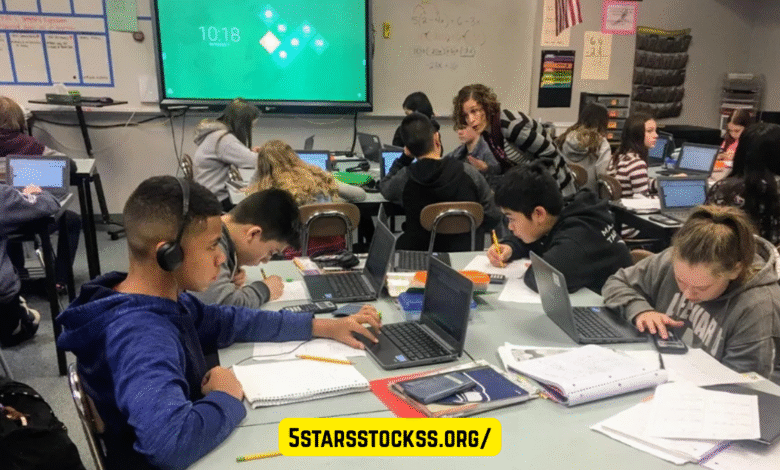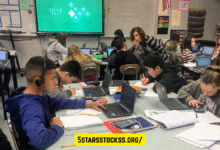Classroom 20x Future Ready Interactive Learning Environment Designs

Classroom 20x represents a new era of educational transformation where innovation, flexibility, and advanced technology merge to shape modern learning. This forward-thinking idea moves beyond the traditional classroom and emphasizes a student-centered experience that adapts to individual learning styles. Classroom 20x encourages active participation, digital immersion, and an environment where every student can connect with lessons in meaningful ways.
In today’s world, classroom 20x has become an essential approach for schools that want to prepare students for a technology-driven future. It focuses on skill building rather than simple memorization, giving students opportunities to think critically and collaborate naturally. This model breaks away from outdated teaching styles and opens the door to interactive design elements that support creativity, curiosity, and hands-on exploration.
Core Elements of a Future Ready Interactive Learning Environment
A future-ready classroom 20x space depends on tools and resources that support both instructors and students. Smart boards, high-quality projectors, digital tablets, and AI-based learning systems allow teachers to deliver lessons in richer and more engaging ways. These tools turn complex ideas into visual experiences and give students a chance to interact directly with educational content.
Every aspect of classroom 20x design is created with purpose. From ergonomic seating that reduces physical strain to flexible desks that shift based on the activity, the environment is crafted for comfort, collaboration, and adaptability. Lighting and acoustics are also carefully considered, ensuring that students remain focused and relaxed. Together, these features create a space where learning feels natural and enjoyable.
Technology That Powers classroom 20x
Technology is at the heart of every classroom 20x design, allowing educators to personalize instruction in new and innovative ways. Artificial intelligence helps track student progress, analyze performance data, and tailor lessons to each learner’s needs. Instead of relying on a one-size-fits-all teaching approach, AI supports differentiated instruction that meets every student where they are.
Virtual reality and augmented reality elevate the learning experience even further. Students can explore historical worlds, dive into science experiments, or visualize complex mathematics through immersive simulations. Cloud-based platforms and real-time analytics ensure that communication between students and teachers stays strong. With proper cybersecurity planning, schools can maintain a safe digital environment where learning can thrive without risk.
Design Strategies for Building classroom 20x Spaces
Creating a classroom 20x setting begins with understanding how students move, think, and interact. Modular layouts allow desks, seating, and workstations to shift fluidly depending on the lesson. Group collaboration zones encourage teamwork, while quiet corners support independent learning. The design remains open, breathable, and uncluttered, giving teachers the flexibility to adjust lessons on the fly.
Connectivity is another crucial factor in classroom 20x design. Reliable wireless networks, efficient power outlets, and organized tech stations maintain smooth learning activities throughout the day. Schools also benefit from choosing eco-friendly materials that support sustainability and reduce long-term costs. Even small classrooms can adopt classroom 20x principles by maximizing space with multifunctional furniture, wall-mounted displays, and creative storage solutions.
Benefits of Implementing classroom 20x
The classroom 20x concept offers significant advantages that impact learning quality and long-term academic success. Students tend to show higher motivation, stronger participation, and increased confidence when they are placed in environments built for engagement. Interactive tools turn lessons into experiences, helping students retain information more effectively and develop real-world skills.
Teachers also benefit from the flow and efficiency of a classroom 20x setting. The smart layout and digital support systems reduce workload, enhance lesson delivery, and help teachers manage diverse learning styles. With better access to data, educators can make informed decisions that support long-term student growth. Schools ultimately see improved performance, stronger communication, and a more connected learning community.
Challenges Schools Face With classroom 20x Adoption
Despite its benefits, implementing classroom 20x does come with challenges. Many schools struggle with budgeting for modern technology and upgrading older buildings to support digital infrastructure. Allocating funds for smart boards, AI software, VR equipment, and flexible furniture requires thoughtful planning and long-term investment strategies.
Another challenge is teacher training. For classroom 20x to work effectively, educators need the skills to operate digital tools confidently and integrate technology seamlessly into lessons. Balancing screen time and maintaining a healthy mix of traditional and interactive learning can also be difficult. However, with proper support, ongoing training, and strategic planning, these obstacles can be successfully overcome.
Real World Examples of classroom 20x Success
Across the United States, schools are seeing remarkable results after adopting classroom 20x environments. Innovation labs, digital learning studios, and project-based classrooms have shown measurable improvements in student focus and academic performance. Teachers report more dynamic interactions, while students demonstrate stronger problem-solving and communication skills.
These success stories highlight the value of embracing next-generation learning environments. Schools that transitioned to classroom 20x often notice improved attendance rates, higher test scores, and greater enthusiasm for learning. The experiences of early adopters prove that modern classroom design is not just a trend but a long-term investment in the future of education.
Conclusion
Classroom 20x represents the future of education, blending creativity, technology, and thoughtful design to support every learner. As schools adopt future-ready spaces, they encourage curiosity, collaboration, and a deeper connection to the learning process. With the right tools and planning, classroom 20x creates an environment where students are prepared for a digital world filled with opportunity.
By embracing these innovative designs, schools can transform how education is delivered and ensure students are ready to navigate the challenges of tomorrow. Classroom 20x is more than a concept—it is a movement toward smarter, more meaningful learning.
